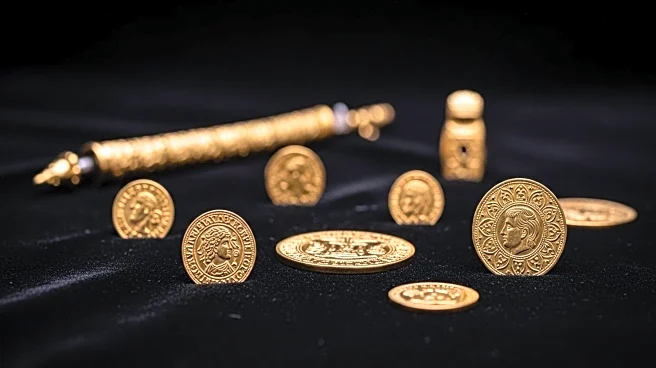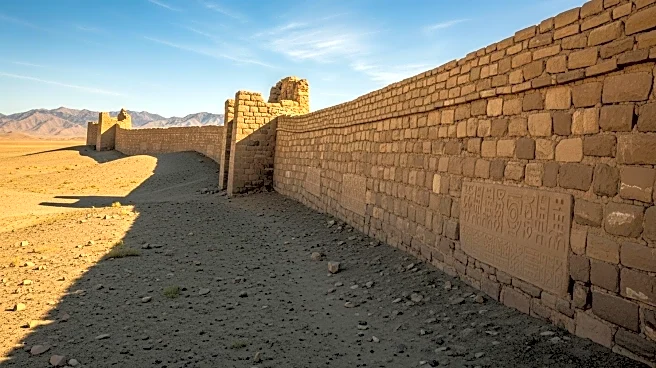What's Happening?
Archaeologists have uncovered four monumental earthwork circles in southern Burgenland, Austria, dating back to the Middle Neolithic period, approximately 2,000 years before Stonehenge. These structures, known as Kreisgrabenanlagen, are believed to have been used for rituals and astronomical observations. The site, considered a supra-regional center of the Middle Neolithic period, includes two Neolithic settlements. Excavations have revealed pits, post holes, and ceramic shards, with soil samples being sent to the University of Vienna for further analysis.
Why It's Important?
The discovery of these ancient earthwork circles provides valuable insights into Neolithic societies and their development of agriculture and animal husbandry. It challenges existing narratives about prehistoric Europe and offers new perspectives on the cultural and technological advancements of early human settlements. This could influence archaeological research and public understanding of human history, potentially leading to revised theories about the origins and spread of Neolithic practices.
What's Next?
The ongoing excavations will continue to explore the site, with further analysis of soil samples expected to yield more information about the Neolithic period. The development of an archaeological park in Rechnitz aims to preserve and showcase these findings, potentially attracting researchers and tourists interested in ancient history. This could lead to increased funding and support for archaeological projects in the region.
Beyond the Headlines
The discovery highlights the importance of interdisciplinary research in archaeology, combining techniques like aerial photography and geomagnetic surveys. It underscores the need for collaboration between archaeologists, historians, and scientists to uncover and interpret ancient sites. This approach may inspire similar projects worldwide, advancing the field of archaeology and enhancing our understanding of human history.











